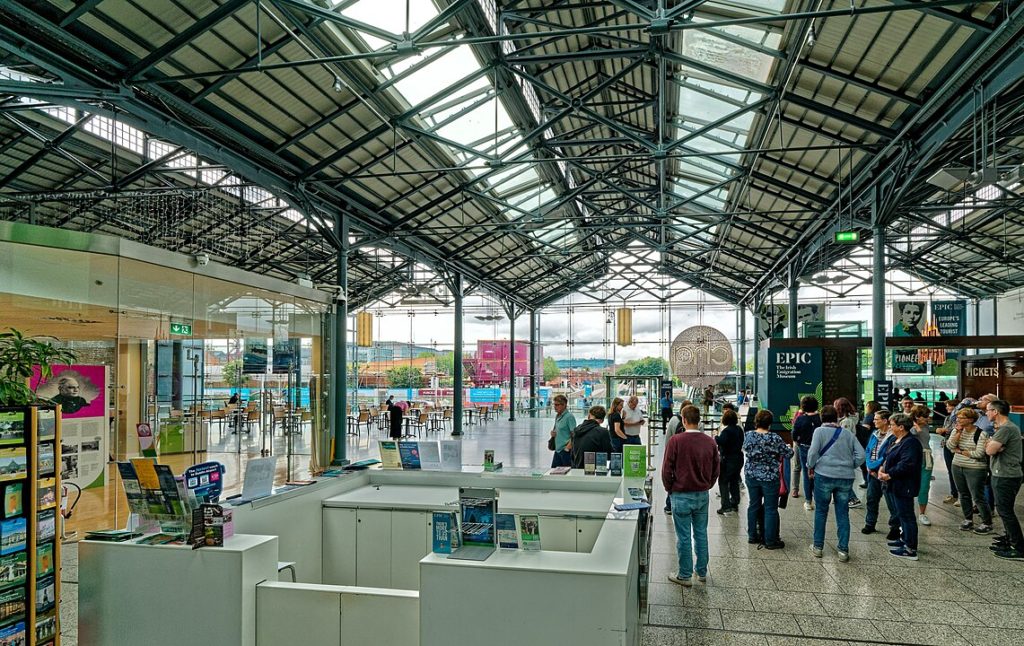ON a recent trip to Dublin, after getting through catch-ups with various family members by the skin of my teeth, I decided to do a few activities usually aimed at tourists, and no I don't mean a jaunty trip to Temple Bar.
I paid a visit to EPIC The Irish Emigration Museum, situated right on the banks of the Liffey.
The museum, less than ten years old, is a marvel of glass and steel, and just a short walk from the city centre.
Unlike traditional galleries and museums, EPIC offers an immersive journey through interactive storytelling.
The museum has won "Europe's Leading Tourist Attraction" at the World Travel Awards for three years in a row.
Founded in 2016 by Neville Isdell - former Coca-Cola CEO - EPIC was inaugurated by former President Mary Robinson the same year.
Since then, it has become a tribute to the journeys and achievements of the Irish diaspora.
Organised into four themes - Migration; Motivation; Influence; and Diaspora Today - the exhibitions guide visitors through the last fifteen hundred years of emigration.
 You can trace your own roots at EPIC (Wikimedia Commons/Photo by Holger Uwe Schmitt)
You can trace your own roots at EPIC (Wikimedia Commons/Photo by Holger Uwe Schmitt)My personal favourite was the ‘Migration’ section, which chronicles periods ranging from the Famine to exile, aided by compelling videos featuring people like Thomas Quinn and Ellen Mahony.
EPIC also offers the “Power of a Name” programme that allows people to submit the names, origins and departure years of emigrant ancestors, which are then projected onto the Legacy Wall.
As a bonus, people can enter a draw for a bespoke genealogy session, offered in partnership with the Irish Family History Centre, allowing an exploration into their own family histories.
One standout figure in the museum’s collection is James Hoban, the Irish-born architect who designed the White House.
A native of Kilkenny, Hoban emigrated in the late 1700s and was personally selected by George Washington to oversee the construction of the President’s House.
His contributions were highlighted in 2014, when then-Vice President Joe Biden addressed an audience in the White House’s East Room - flanked by Irish and American flags - quoting President Kennedy’s 1963 address to Ireland’s Parliament:
“Our two nations, divided by distance, have been united by history and nothing exemplifies this bond more than this building. It was designed by an Irishman named James Hoban.”
One couple who I spoke with, Tim and Barbara O’Brian, were visiting from Boston in the US.
With Irish heritage on both sides, they said the museum was a remarkable experience.
“We were last here in 2007, and there was nothing like this then", he said, beaming with American enthusiasm.
Barbara added, in a similarly cheerful tone: “It’s so great learning about all the Irish history.”
In last year’s major showcase, ‘Look Back to Look Forward: 50 Years of the Irish in Britain,’ EPIC showed the deep connection between Ireland and Britain.
Its current headline exhibit, ‘On the Move: A Century of the Irish Passport,’ celebrates a century of Irish passports and its evolution over the years.
Tánaiste and Minister for Foreign Affairs and Trade Simon Harris TD said at the opening of the new exhibit, “I am especially delighted to see submissions from citizens who have shared their significant and historic family passport stories, which highlight the experiences that make the Irish passport so special.”
On a personal note, my parents emigrated from Ireland to Britain roughly 30 years ago, although I suspect instead of crossing the sea on a ferry with nothing but hope and a suitcase, they crossed by Ryanair with a wriggling baby and a hangover.
Learning about the different journeys of people stretching all the way back to 500 AD was both fascinating and moving.
Whether you're an enthusiastic tourist, a frequent visitor or simply curious about your own roots EPIC offers so much more than just a history lesson - its about a connection that millions of us share.
It's a reminder that the story of Ireland is written, not just in its 32 counties, but all over the world.

